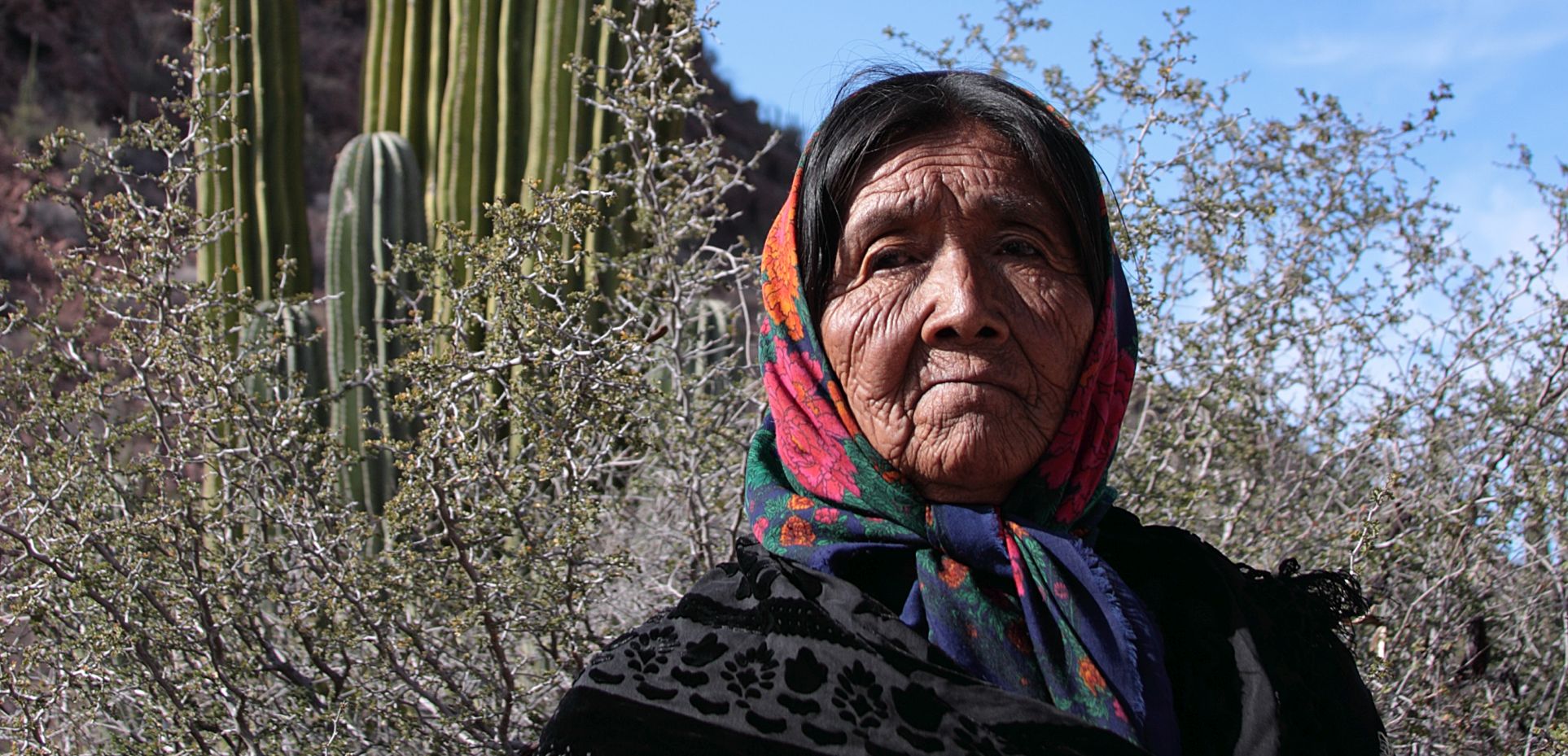Women from indigenous communities come together at the Barefoot College in India to learn about solar power. When they return home, they are responsible for building and maintaining solar panels. Emilio Godoy takes a look at the experience of Cecilia Moreno, from the Comcaac indigenous group in Mexico.

Community leaders (like Doña Ramona from Punta Chueca, pictured here) can receive training on solar panel maintenance. (Photo by Tomascastelazo, edited, CC BY-SA 3.0)
Cecilia Moreno had never flown before she set out to cross half the world to attend a course on solar electricity in India.
Supported by the Mexican Protected Areas National Commission, the body in charge of protecting of natural reserves throughout Mexico, and India´s Barefoot College, Ms Moreno and three other indigenous women, from the Comcaac indigenous group in the northwestern state of Sonora, Mexico, spent six months in Tilonia in the northwestern part of India. They attended the course from September 2016 until March of this year and learned how to mount and repair PV panels.
“We learned how to install solar panels, how to build solar lamps piece by piece and how to use equipment in homes or offices,” says Ms Moreno, who belongs to the water committee in her community, in a phone interview.
She attended the course together with 35 indigenous women from all over the world, including Botswana, Cape Verde, Kiribati, Madagascar, Mali, Micronesia, Myanmar, Syria, Senegal, Somalia, and Tonga. The four women were the third Mexican group to attend such a training. Courses aimed at turning the participating women into so-called “Solar Mamas” and international solar trainees.
“It’s a new learning, a unique experience of living together with such a diverse group of women leaders that will be of great benefit for our communities,” says Ms Moreno.
Barefoot College, established in 1972 by Bunker Roy, a pioneer educationist and environmentalist, is an innovation and training center for rural and indigenous women who have little or no formal education. At the college, these women acquire solar technologies skills, which turns them into leaders in their communities after they return and share their knowledge with their respective communities.
The skills taught at Barefoot College focus on the maintenance of solar systems, including installing the solar units and connecting them to batteries, building solar street lights and managing their operation.
The women are responsible for installing, fixing and performing the maintenance for PV units in their communities, included in a five years commitment to that job.
To date, the college has trained more than 1200 women from 73 countries. By these measures, 500,000 people have gained access to electricity and electric lamps, and 500 million litres of kerosene have been replaced with solar energy for heating and cooking.
This is an extraordinary example of international collaboration to deliver electricity to impoverished communities at low cost. Women are being empowered, and renewable energies gradually replace fossil fuels as the main source of energy production in indigenous communities.
There are 69 ancestral groups in Mexico to which the four women belong, representing around 11 million people. These are among the most discriminated and underprivileged communities in the country of 129 million inhabitants. Today, more than two million Mexicans have no access to electricity, and most of them are a part of the ancestral groups.
For example: in the towns Desemboque de los Seris and Punta Chueca, around 80 percent of the population lacks access electricity because they cannot afford it. The community plans to conduct a poll and find out which homes lack access to electricity. Based on these results, the community levy a monthly fee for each household, of which 40% is paid to the solar engineer. The remaining 60% goes toward a community fund that, after 5 or 6 years, will have the financial means to replace the first solar equipment installed.
Not only does the education provided by Barefoot College provide the community women leaders with the necessary know-how into switching from their primary source of energy from fossil fuels to renewables but also helps to address the energy access and poverty dilemma in their respective communities.
“We do hope to eventually see solar electricity in our houses, which will be a huge reward for our efforts to be away from our communities for six months,” says Ms Moreno.
Based on this experience, it is expected that more indigenous Mexican women will travel to India to learn about the management of solar systems. Such a focus would invigorate the gender perspective in the energy sector, fight energy poverty, display renewable energy and diminish the disenfranchisement in rural areas.
[…] how to build solar lamps piece by piece, and how to use equipment in homes or offices,” says Cecilia Moreno, who belongs to the water committee in her community. “It’s a new learning, a unique experience […]
[…] how to build solar lamps piece by piece, and how to use equipment in homes or offices,” says Cecilia Moreno, who belongs to the water committee in her community. “It’s a new learning, a unique experience […]
[…] to build solar lamps piece by piece, and how to use equipment in homes or offices,” says Cecilia Moreno, who belongs to the water committee in her community. “It’s a new learning, a unique […]